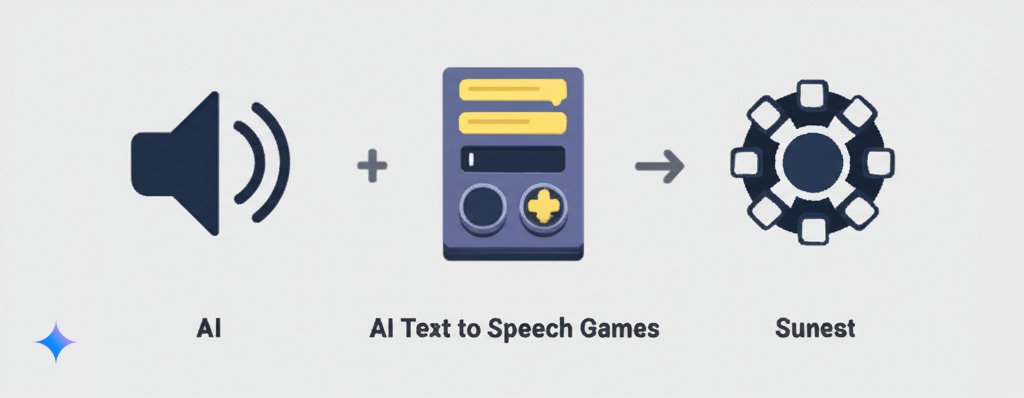
AI text to speech for games transforms game accessibility by converting text into natural speech, enabling developers to include high-quality narration without expensive voice acting. This technology makes games more accessible to players with visual impairments while enhancing the experience for all users.
Introduction
Gaming should be for everyone – that’s something more developers are finally getting serious about. And one of the coolest tools making this happen? AI text to speech for games. This tech is changing how people with disabilities experience video games, opening up worlds that were once off-limits.
I’ve spent the last year talking to developers who create accessible games with AI text to speech and players who benefit from these features. The stories I’ve heard are eye-opening. One blind gamer told me he went from playing maybe 3-4 games total to having access to dozens of new titles in just the past two years.
Not long ago, game accessibility meant basic stuff like subtitles or colorblind modes. Now? Games like The Last of Us Part 2 and Uncharted 4 have set new standards with over 60 accessibility options each. AI voice technology in games is a big part of this revolution.
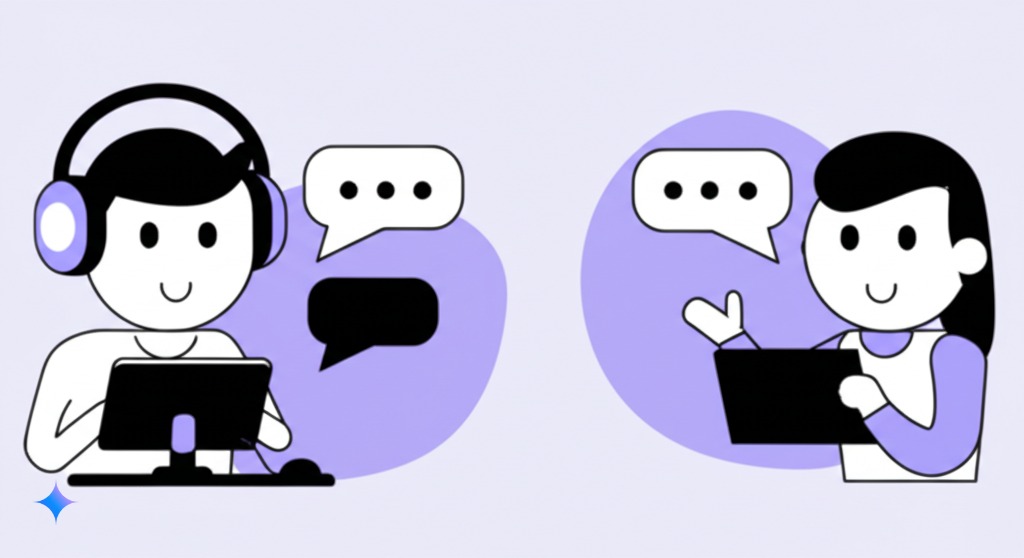
Why should developers care about using AI text to speech for games? Beyond just being the right thing to do, there’s a huge market opportunity. Over 400 million gamers worldwide have disabilities that affect how they play. That’s a massive audience most developers are still missing out on.
In this guide, I’ll walk you through everything: how to create accessible games with AI text to speech, the benefits for different player groups, technical implementation details, and smart design strategies. Whether you’re an indie developer or working at a AAA studio, you’ll find practical advice you can use right away.
Let’s break down how to make games that everyone can enjoy!
Want to explore AI text to speech for other applications? Check out our guide to AI text to speech for narration
Benefits of AI Text to Speech for Different Player Groups
When you create accessible games with AI text to speech, you’re helping many different types of players. Here’s how various groups benefit:
For Visually Impaired Players
AI text to speech for games is a game-changer for blind and low-vision players:
- Reading game text out loud – Menu options, inventory descriptions, quest logs, and dialogue can all be converted to speech
- Describing environments – Some advanced systems can narrate what’s happening on screen
- Navigation assistance – Voice guidance can help players move through game worlds
- UI element identification – Telling players what buttons and options are available
A blind gamer I interviewed said: “Before gaming accessibility technology like TTS, I mostly stuck to audio-only games. Now I can play RPGs with complex stories and menus that would have been impossible before.”
For Players with Reading Difficulties
Players with dyslexia, learning disabilities, or cognitive issues get big benefits:
- Reducing reading fatigue – Long text sections become easier to process
- Supporting comprehension – Hearing and seeing text simultaneously improves understanding
- Making complex info manageable – Breaking down complicated game mechanics through audio
- Maintaining immersion – Players stay in the game rather than struggling with text
A parent whose child has dyslexia shared: “My kid used to ask me to read everything in games. Now with text to speech game development features, he can play independently and actually finish games on his own.”
For Deaf and Hard of Hearing Gamers
While it might seem counterintuitive, AI speech synthesis for games helps deaf players too:
- Complementing speech-to-text – Creating a complete communication loop
- Supporting players with multiple disabilities – Some players have both visual and hearing impairments
- Adding voice to previously text-only elements – Enhancing immersion even when played with captions
For Players with Motor Impairments
Voice technology helps players with physical limitations:
- Reducing reliance on complex button combinations
- Enabling voice commands when paired with speech recognition
- Creating more flexible interaction methods
- Providing clear audio feedback for actions
Learn more about text to speech solutions for visual impairment that can be applied to gaming.
Technical Implementation: How to Add AI TTS to Your Games
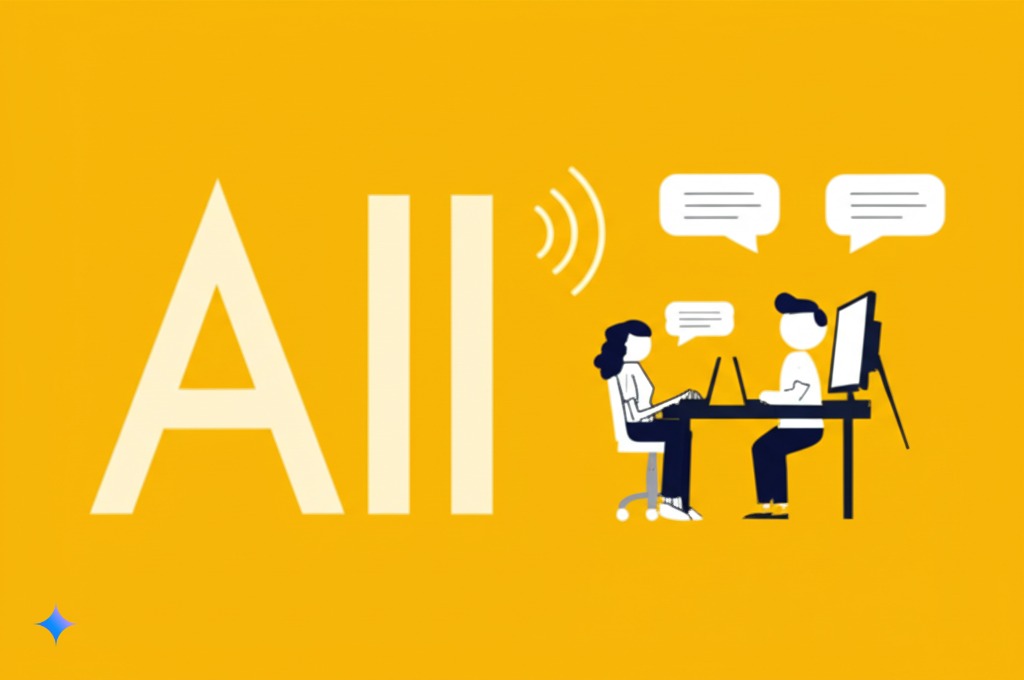
Let’s get practical about how to create accessible games with AI text to speech. Here are your main options and how to implement them:
Integration with Popular Game Engines
Unity Implementation
Unity makes it relatively straightforward to add AI text to speech for games:
- Choose your TTS solution – Options include:
- Unity’s built-in TTS features
- Microsoft Azure Cognitive Services plugin
- Google Cloud TTS integration
- Third-party assets from the Unity Store
- Basic implementation code:
csharpCopyusing UnityEngine;using UnityEngine.Windows.Speech; public class TTSController : MonoBehaviour{ private KeywordRecognizer keywordRecognizer; void Start() { // Initialize your TTS system // Example with built-in Windows TTS: using (SpeechSynthesizer synthesizer = new SpeechSynthesizer()) { synthesizer.Speak(“Game loaded successfully”); } } public void SpeakText(string textToSpeak) { // Call this method whenever text should be read aloud using (SpeechSynthesizer synthesizer = new SpeechSynthesizer()) { synthesizer.Speak(textToSpeak); } }}
- Add triggers throughout your game – Call the SpeakText function whenever:
- New dialogue appears
- The player enters a menu
- Important game events occur
- The player selects or hovers over UI elements
Unreal Engine Approach
Unreal handles text to speech implementation a bit differently:
- Use the Text-To-Speech plugin (available since UE 4.26)
- Basic implementation:
cppCopy#include “TextToSpeech.h” void AMyGameCharacter::SpeakDialogue(FString TextToSpeak){ UTextToSpeechSubsystem* TTSSubsystem = GEngine->GetEngineSubsystem<UTextToSpeechSubsystem>(); if (TTSSubsystem) { TTSSubsystem->Speak(TextToSpeak, VoiceOptions, 1.0f); }}
- Configure voice options in your game settings menu to let players customize the experience
Cloud-Based vs. Local TTS Solutions
When you create accessible games with AI text to speech, you’ll need to choose between:
Cloud-Based Solutions
Pros:
- Higher quality, more natural-sounding voices
- Regular improvements without game updates
- Support for dozens of languages and accents
- Advanced features like emotion and custom voices
Cons:
- Requires internet connection
- Potential latency issues
- Usage costs for high-volume applications
- Privacy considerations for user data
Popular options:
- Microsoft Azure AI Speech Services
- Google Cloud Text-to-Speech
- Amazon Polly
- IBM Watson TTS
Local (On-Device) Solutions
Pros:
- Works offline
- No latency issues
- One-time cost (typically)
- Better privacy protection
Cons:
- Generally lower voice quality
- Limited voice and language options
- Takes up device storage/memory
- Doesn’t improve without updates
Popular options:
- CereProc
- Acapela Group
- ReadSpeaker
- Platform-native TTS (Windows, macOS, iOS, Android)
A mobile game developer told me: “We use a hybrid approach when we create accessible games with AI text to speech. Critical game elements use local TTS for reliability, while our cutscenes use cloud TTS for better quality when an internet connection is available.”
Check out our comparison of free text to voice options that can be used in game development.
Design Considerations for TTS-Enhanced Games
Adding AI text to speech for games is about more than just the technical implementation. Good design is crucial for a great player experience.
Character Voice Development
When using AI voice technology in games for characters:
- Create distinctive voices for different characters:
- Customize pitch, speed, and timbre
- Consider regional accents for character background
- Match voice qualities to character personalities
- Use different voice models for variety
- Maintain voice consistency:
- Keep a database of voice parameters for each character
- Use the same base model for a character throughout the game
- Consider voice “templates” for minor characters by type
- Add emotional range:
- Use newer neural voice models that support emotions
- Tag dialogue with appropriate emotional markers
- Consider context-aware emotion for dynamic scenes
A story-driven game developer shared: “When we create accessible games with AI text to speech, we build character voice profiles with 5-6 parameters to keep each NPC distinct and recognizable.”
User Interface Design for Audio-First Experiences
Create menus and interfaces that work well with TTS:
- Structure menus logically:
- Group related items together
- Use consistent patterns that are easy to navigate by voice
- Avoid deeply nested menus when possible
- Add audio cues:
- Different sounds for different menu types
- Confirmation sounds for selections
- Warning sounds for important choices
- Implement audio focus indicators:
- Clear indications of what element is currently selected
- Automatic reading of focused elements
- Option to repeat information
- Create keyboard/controller shortcuts:
- Direct access to important menu sections
- Ability to skip or speed up TTS
- Emergency mute option
An accessibility consultant explained: “The best video game accessibility features don’t just add TTS to existing interfaces. They rethink the entire UI flow to work well with speech.”
Learn about text to speech for customer service for principles that can apply to game help systems.

Narrative Design with TTS Technology
Writing game text that works well with AI speech synthesis for games:
- Optimize your writing:
- Use shorter sentences for better TTS flow
- Avoid unusual punctuation that might confuse TTS
- Provide pronunciation guidance for fantasy terms
- Test how names and invented words sound
- Balance pre-recorded and TTS audio:
- Use professional voice actors for main characters
- Consider TTS for minor NPCs and dynamic content
- Be consistent about which characters use which approach
- Create dynamic dialogue systems:
- Use TTS for procedurally generated content
- Build systems that can adjust dialogue based on player choices
- Consider text templates with variable insertion
A narrative designer shared this tip: “When we create accessible games with AI text to speech, we read all dialogue aloud during the writing process. If it sounds awkward to us, it’ll sound awkward to the TTS system too.”
Localization and Multilingual Support
One huge advantage of using AI text to speech for games is easier and cheaper localization.
Cost-Effective Global Reach
AI voice technology in games can dramatically reduce localization costs:
- Traditional voice localization challenges:
- Professional voice actors for each language
- Studio time for recording
- Direction to maintain consistent tone
- Re-recording for any script changes
- TTS advantages:
- Generate voices in dozens of languages automatically
- Update dialogue without new recording sessions
- Maintain consistent voice quality across languages
- Support languages with limited professional voice talent
An indie developer told me: “Localizing our game into 10 languages with traditional voice acting would have cost around $50,000. Using AI text to speech for games, we did it for under $5,000 and could update lines easily.”
Implementation Strategies
How to make multilingual TTS work effectively:
- Language detection and switching:
- Automatically detect system language
- Allow manual language selection
- Consider separate voice settings for each language
- Cultural adaptation:
- Adjust speech patterns for cultural differences
- Consider regional accents where appropriate
- Test with native speakers for natural sound
- Technical considerations:
- Ensure font support for all languages
- Allow different text display times for languages that take longer to speak
- Test text expansion in UI elements (German and Finnish text is often much longer than English)
Explore AI text to speech online tools that support multiple languages for game development.
Case Studies: Successful Implementation in Games
Let’s look at some real examples of games that create accessible games with AI text to speech effectively:
Commercial Success Stories
The Last of Us Part II
Naughty Dog’s masterpiece set new standards for accessible game design:
- Text-to-speech for all written text including menus, subtitles, and collectibles
- Audio cues for navigating complex environments
- High-contrast mode that works with TTS for low-vision players
- Result: Won the Innovation in Accessibility award at The Game Awards 2020
Sea of Thieves
Rare’s pirate adventure uses AI voice technology in games cleverly:
- Text-to-speech and speech-to-text for player communication
- Transcription of voice chat for deaf players
- TTS for reading back typed messages to other players
- Result: Created an inclusive multiplayer environment where deaf and hearing players can communicate seamlessly
Forza Horizon 5
Playground Games implemented extensive gaming accessibility technology:
- Screen narration throughout the game interface
- Color blindness filters that are explained via TTS
- Text-to-speech for chat in multiplayer modes
- Result: Won the Innovation in Accessibility award at The Game Awards 2021
Indie Game Approaches
Smaller studios are also finding creative ways to create games with AI text to speech:
In the Shadows
This indie puzzle platformer implemented:
- Full menu narration using affordable TTS tools
- Context-sensitive hints delivered via audio
- Environmental descriptions for key game elements
- Result: Became playable for blind gamers despite having a small development team
A Blind Legend
This audio-only game took TTS to the next level:
- Created an entire game experience without visuals
- Used 3D binaural audio with TTS elements
- Designed specifically for blind players but enjoyable by anyone
- Result: Proved that inclusive gaming design can create unique experiences appealing to all players
A developer from one of these indie teams shared: “We didn’t have a big budget to create accessible games with AI text to speech, but we found that even basic implementation made our game playable for so many more people.”
Learn how AI text to speech for video games is changing the industry.
Compliance and Industry Standards
Understanding the guidelines and standards for accessible game design is important.
Accessibility Guidelines
When you create games with AI text to speech, consider these frameworks:
- Game Accessibility Guidelines
- Comprehensive resource at gameaccessibilityguidelines.com
- Categorized by basic, intermediate, and advanced implementation
- Specific recommendations for different disability types
- Xbox Accessibility Guidelines
- Microsoft’s detailed framework for game accessibility
- Technical specifications for features including TTS
- Testing methodology with disabled players
- Accessible Player Experiences (APX)
- Pattern library for accessible design
- Design patterns specifically for TTS implementation
- Resources for both large and small development teams
- WCAG Principles Applied to Gaming
- Perceivable: Information must be presentable to users in ways they can perceive
- Operable: User interface components must be operable
- Understandable: Information and operation must be understandable
- Robust: Content must be robust enough to work with various technologies
A game accessibility consultant noted: “When studios create games with AI text to speech, following established guidelines saves time and ensures they don’t miss critical features.”
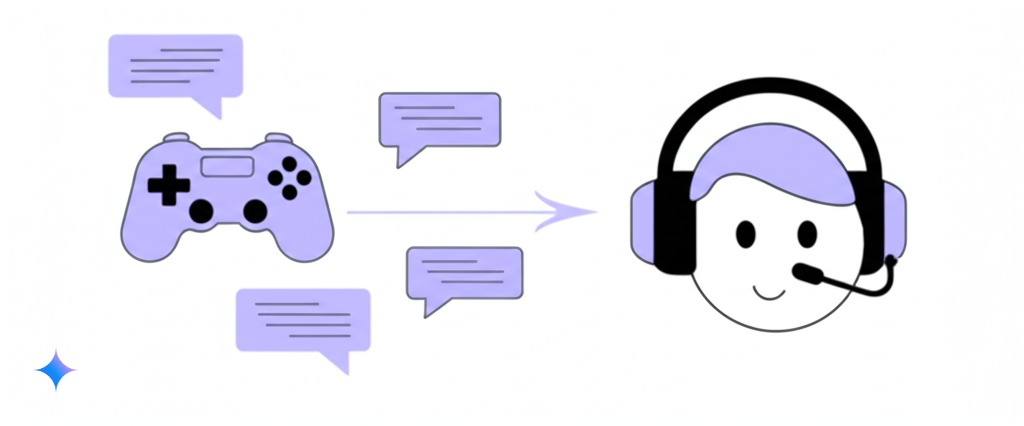
Implementation Roadmap
A step-by-step approach to adding AI text to speech for games:
- Assessment Phase (1-2 weeks)
- Identify text elements that need speech
- Determine which player groups you’re supporting
- Evaluate technical requirements and constraints
- Review competitor implementations
- Planning and Resource Allocation (2-4 weeks)
- Select appropriate TTS technology
- Budget for implementation and testing
- Create timeline with accessibility milestones
- Identify team members responsible for implementation
- Implementation (varies by project size)
- Integrate technical solution
- Design UI with TTS in mind
- Create testing protocols
- Document TTS features for team reference
- Testing with Target Users (ongoing)
- Recruit players with disabilities
- Conduct structured testing sessions
- Gather qualitative feedback
- Implement improvements based on feedback
- Post-Launch Monitoring (ongoing)
- Track usage of accessibility features
- Collect user feedback
- Plan updates and improvements
- Share learnings with the community
Check out our guide to AI text to speech training for more implementation tips.
Market Expansion Through Accessibility
Using AI text to speech for games isn’t just about doing the right thing—it’s also smart business.
Reaching New Audiences
The numbers make a compelling business case:
- Over 400 million gamers worldwide have disabilities that affect how they play
- 71% of players with disabilities report avoiding games due to accessibility issues
- Accessible games often see 30% more playtime among all players
- Word-of-mouth recommendations increase significantly when games are accessible
A marketing director at a mid-sized studio shared: “After we started to create games, our player base grew by 23% within six months. Many of these new players didn’t have disabilities—they just appreciated the additional options.”
Building a Positive Brand Reputation
Inclusive gaming design enhances your studio’s image:
- Media coverage benefits:
- Gaming publications increasingly highlight accessibility features
- Awards and recognition specifically for accessibility
- Positive social media attention
- Community building:
- Loyal player base among disabled gamers
- Active participation in accessibility discussions
- Valuable feedback for future improvements
- Industry leadership:
- Recognition as an innovative, forward-thinking studio
- Speaking opportunities at industry events
- Recruitment advantage for talent that values inclusion
A PR specialist noted: “Games that create accessible games with AI text to speech often get coverage in mainstream media outlets, not just gaming press. It positions studios as technology innovators and socially responsible companies.”
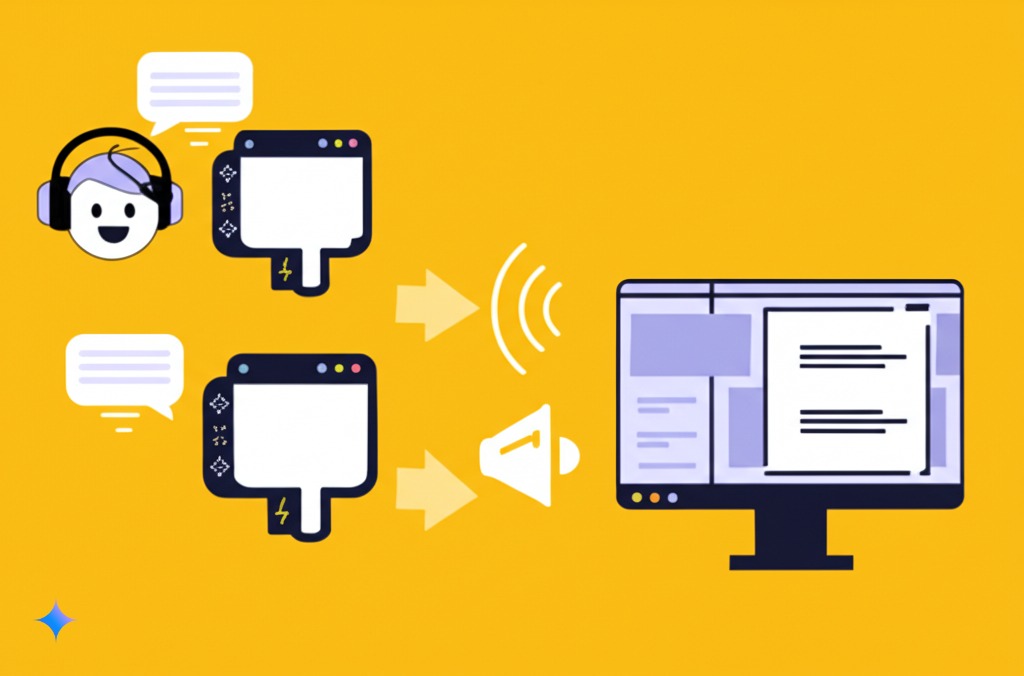
Learn about AI text to speech quality standards to ensure your game implementation meets expectations.
Future Trends in AI Voice Technology for Gaming
The future of AI text to speech for games is evolving rapidly. Here’s what’s coming:
Emerging Voice Technologies
- Emotional and contextual awareness:
- AI voices that understand the emotional context of a scene
- Dynamic adjustment of tone based on game events
- Voices that show appropriate stress or excitement
- Character-specific voice models:
- Custom AI voices developed specifically for game characters
- Consistent personality traits reflected in speech patterns
- Voice continuity across game franchises
- Player-responsive systems:
- Voices that adapt based on player choices and play style
- Personalized audio experiences based on player preferences
- Systems that learn player terminology preferences
- Voice cloning advancements:
- Celebrity voices recreated with permission
- Options for players to clone their own voice for protagonists
- Better preservation of voice actor performances with less studio time
A developer working on voice synthesis in gaming told me: “The next generation of games won’t just create ai games with text to speech—they’ll create dynamic, responsive voice performances that adapt to each player’s experience.”
Industry Evolution Predictions
How the gaming industry will change:
- Standardization of voice accessibility:
- Platform-level TTS tools across consoles and PC
- Shared best practices adopted industry-wide
- Accessibility certification programs
- Cross-platform voice profiles:
- Player voice preferences that transfer between games
- Unified accessibility settings across gaming platforms
- Voice customization options saved to player profiles
- AI voice becoming standard:
- TTS features included by default in most games
- Hybrid approaches combining recorded and AI voices
- Players expecting voice options in all titles
An accessibility advocate predicted: “By 2027, I believe 90% of major game releases will create accessible games with AI text to speech options built in from day one. It will simply become expected, like subtitles are today.”
Explore AI text to speech solutions for various applications beyond gaming.
Practical Tips for Getting Started
Ready to create games with AI text to speech in your next project? Here’s how to begin:
For Indie Developers on a Budget
- Start with free or low-cost options:
- Platform-native TTS (Windows, macOS, Android)
- Open-source libraries like eSpeak or Festival
- Free tiers of cloud services (Google Cloud TTS offers free monthly quota)
- Focus on high-impact elements first:
- Main menu navigation
- Tutorial text
- Critical game instructions
- Important story elements
- Leverage community resources:
- Game accessibility testing groups
- Free accessibility consultations from advocacy organizations
- Open-source accessibility plugins for game engines
A solo developer advised: “I couldn’t afford to implement everything at once, so I added AI text to speech for games to my main menu and critical text first. Players appreciated the effort, and I added more as budget allowed.”
For Mid-Size and AAA Studios
- Create an accessibility specialist role:
- Dedicated team member focusing on accessibility
- Regular accessibility reviews during development
- Coordination with voice actors and TTS implementation
- Implement comprehensive testing:
- Partner with accessibility consulting firms
- Build relationships with disability gaming communities
- Pay testers with disabilities for structured feedback
- Develop studio-wide guidelines:
- Create documentation for accessible game design
- Establish TTS implementation standards
- Build accessible design into your studio’s DNA
A producer at a mid-size studio shared: “We now have an accessibility checklist that includes 15 specific items related to AI text to speech for games. Every game we make has to meet these standards before release.”
Learn about text to speech for e-learning for principles that can apply to tutorial sections in games.
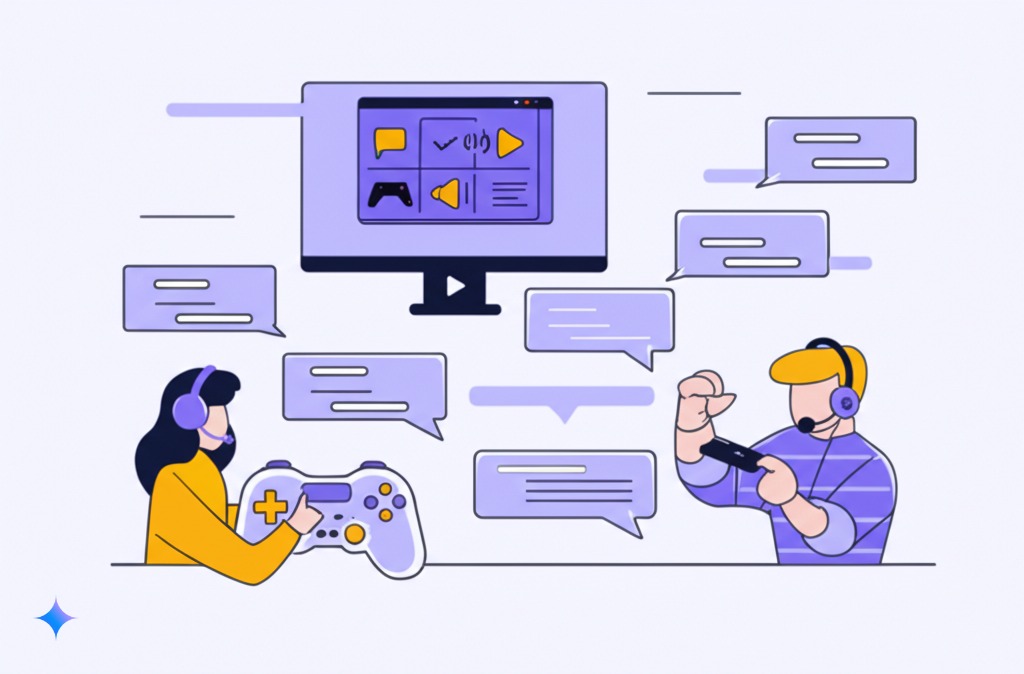
Conclusion
The ability to create games with AI text to speech has transformed how developers approach game design. What was once seen as a niche feature for a small audience is now recognized as an essential component that benefits everyone.
As AI voice technology in games continues to improve, the gap between traditional voice acting and AI-generated speech narrows every day. For many game elements, that gap is already small enough that players can’t tell the difference—making AI a smart choice for developers at every level.
Remember these key points:
- AI text to speech for games makes your title playable for millions more potential customers
- The technology works best when you design with accessibility in mind from the start
- Different platforms offer different strengths—test before committing
- Accessibility is both ethically right and commercially smart
- Being part of the accessibility movement positions your studio as forward-thinking
Whether you’re a solo indie developer or part of a major studio, the tools to create games with AI text to speech are available, affordable, and easier to use than ever before. The biggest barrier isn’t technology—it’s simply making the decision to start.
As one game developer put it: “The question isn’t whether we can afford to make our games accessible. The question is whether we can afford not to.”
Explore free text to voice online tools to get started with accessible game development.
FAQ: Creating Accessible Games with AI Text to Speech
How does AI text-to-speech improve gaming accessibility?
AI text to speech for games makes titles more accessible in several key ways. It provides audio alternatives to visual text, helping players with vision impairments, reading difficulties, or learning disabilities engage with game content. It can narrate menus, dialogue, tutorials, and in-game text. When paired with screen readers, it helps blind players navigate interfaces. For players with cognitive disabilities, hearing text while seeing it improves comprehension. Modern AI voice technology in games can also support multiple languages, making games accessible to international players and those learning new languages.
What are the costs associated with implementing AI TTS in games?
The cost varies widely depending on your approach. Free options include open-source libraries like eSpeak or platform-native TTS systems, though these usually have lower quality voices. Cloud-based services like Google Cloud TTS, Amazon Polly, and Microsoft Azure offer better quality but use subscription models, typically charging per character or audio minute generated (roughly $4-16 per million characters). Premium services with high-quality voices from companies like ReadSpeaker or CereProc can cost more but offer better results. For indie developers, budget around $500-2,000 for basic implementation, while larger games might spend $5,000-20,000 for comprehensive, high-quality TTS integration.
Can AI voices sound as natural as human voice actors?
Modern neural voice models have dramatically narrowed the gap between AI and human voice quality. For utility text like menu narration or item descriptions, today’s top AI voices are nearly indistinguishable from humans. For emotional story content, AI still lacks some of the nuance and performance qualities of professional voice actors. The best approach when you create games with AI text to speech is often hybrid: use human actors for main characters and critical emotional scenes, while using AI for secondary characters, dynamically generated content, and UI elements. The technology is improving rapidly, with each new generation of AI voices adding more natural inflection, emotional range, and performance capabilities.
How do I choose between cloud-based and local TTS solutions?
This choice depends on several factors. Cloud-based solutions offer higher quality voices, regular improvements without updates, better language support, and advanced features like emotion, but require internet connectivity, may have latency issues, and incur usage costs. Local solutions work offline, have no latency, typically involve one-time costs, and offer better privacy, but generally have lower voice quality, limited options, and require storage space. For mobile games, consider data usage implications of cloud TTS. For narrative-heavy games, voice quality might be more important. For accessibility-focused games that must work offline, local TTS might be essential despite quality tradeoffs.
What languages are typically supported by game TTS systems?
Most major AI text to speech for games platforms support 20-50 languages, with the most comprehensive coverage for English, Spanish, French, German, Italian, Portuguese, Japanese, Korean, and Chinese. Cloud services like Google Cloud TTS and Microsoft Azure support 100+ voices across 45+ languages. Support for less common languages varies significantly between providers. Consider your target markets carefully. For major languages, you’ll have multiple voice options, while less common languages might have limited choices. Some services also offer various accents within languages (like US, UK, and Australian English), which adds cultural authenticity to different characters.
How can smaller indie studios implement TTS on a limited budget?
Indies can still create games without breaking the bank. Start with free or low-cost options like platform-native TTS, open-source libraries, or free tiers of cloud services (Google Cloud TTS offers a free monthly quota). Focus on high-impact elements first: main menu navigation, tutorial text, and critical game instructions. Leverage community resources like volunteer accessibility testers. Consider using text-based dialogue with optional TTS rather than requiring it for all text. Implement features incrementally, starting with basics like menu narration, then adding more as budget allows. Many indie successes started small and expanded their accessible game design features over time based on player feedback and increasing resources.
Sources
- https://www.thegamer.com/video-games-with-speech-to-text-deaf-hoh-accessibility/
- https://www.infidigit.com/industries/seo-for-gaming
- https://murf.ai/resources/text-to-speech-for-game-development/
- https://www.searchenginejournal.com/intersection-of-seo-and-accessibility-optimizing-for-all-users/510254/
- https://learn.microsoft.com/en-us/azure/ai-services/speech-service/gaming-concepts

